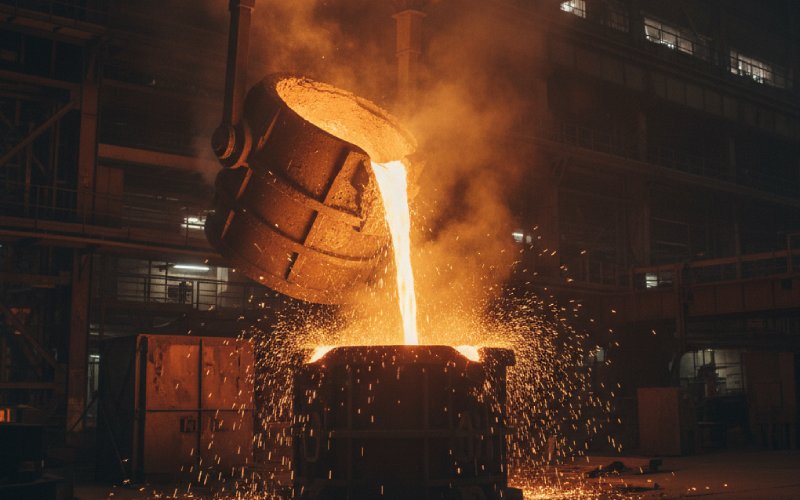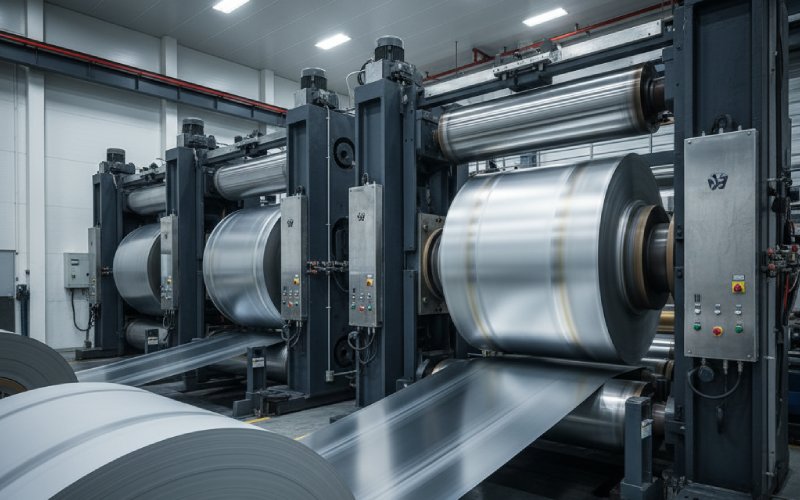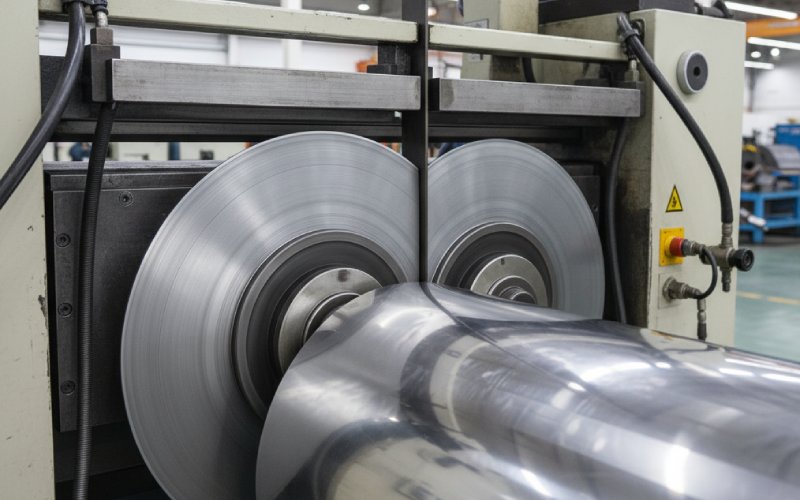Let Sino's Lamination Stacks Empower Your Project!
To speed up your project, you can label Lamination Stacks with details such as tolerance, material, surface finish, whether or not oxidized insulation is required, quantity, and more.

Have you ever wondered what makes our power grids work the way they do? A special kind of material called CRGO steel is a secret hero. This steel is put inside transformers. These transformers give power to our homes and towns. This article will show you the whole manufacturing process for this amazing electrical steel. We will explain every tricky step in simple, easy-to-understand ways. Reading this will help you see how this special material is made. You will also learn why it is so important for not wasting power.
To make CRGO steel, you must start by picking the right raw materials. The main thing used is very pure iron. This iron must have very few things you don’t want, which are called impurities. An impurity can mess up how the steel works with magnets later on. The manufacturing process needs a very clean start. This is why picking the best raw materials is a very important part of the whole production.
Along with iron, another important part is silicon. This is why CRGO steel is a kind of silicon steel. An exact amount of silicon is added, usually about 3%. Tiny amounts of other things are also added. These help with the manufacturing process. The goal is to make a perfect steel alloy right from the start. Every step that comes next works well only if you start with the right stuff. This control at the beginning helps make sure the final product has low core loss.
The steel composition is picked for a good reason. Everything in the mix has a special job. Like we said, the main material is iron. But adding silicon is what makes this a special electrical steel. Silicon makes the steel not as good at carrying electricity. This might seem like a bad thing. But it is actually very good for this use. It helps to reduce energy loss, which is called eddy current losses. This property is a very important part of making a high efficiency transformer core.
The importance of the right steel composition is extremely high. A small mistake at this point can lead to big problems down the road. The finished material needs to have really great magnetic properties. It must let the magnetic energy, called magnetic flux, flow through it easily in just one direction. This ability is called high permeability. The right mix of iron and silicon steel sets up the steel to have these abilities. The entire manufacturing process is made to work with this special steel composition.

After the raw materials are picked, the first big step in the manufacturing process starts. The materials are put into a giant furnace. The furnace uses a great deal of heat. This heat melts the iron and silicon together. This makes a hot liquid called molten steel. The temperature has to be watched very closely during this heating process. This makes sure everything melts into a perfectly mixed steel alloy.
While the steel is a liquid, it is also cleaned. Lighter stuff and any impurity float up to the top. This top layer is called slag, and it gets taken off. This cleaning step is very important. It makes sure the final steel is very, very clean. After it is cleaned, the molten steel is poured into a big mold. It starts to cool down and turns into a solid block of steel. This block is what is used for all the next steps in the manufacturing process.
The block of steel is still quite thick. To make it thinner, it is put through a rolling process. The first time this happens is during hot rolling. The block is put through another heating process. It is heated to a very high temperature. This makes the steel soft and very easy to shape. The hot block is then sent between huge rollers. These rollers press down on the steel. This makes it much longer and thinner.
This step happens many times. Each time, the steel sheet gets a little bit thinner. The hot rolling process is a normal step in making steel. For CRGO electrical steel, it gets the material ready for the most important part of the manufacturing process: cold rolling. The goal at this point is to get the steel to the perfect thickness to start the next step. The surface of the steel is also made ready during this process.
Cold rolling is the step that makes CRGO steel so special. CRGO stands for Cold Rolled Grain-Oriented steel. This process is not like hot rolling. It is done when the steel is at a normal room temperature. The steel sheets are sent through rollers one more time. This process makes the steel a lot thinner. The final thickness of the steel sheets is very important for how well it works. A thinner material helps to waste less power.
But making the steel thin is not the only reason for this step. The cold rolled process does something very special to the steel on the inside. It changes the way the tiny metal parts, called grains, are arranged. This process makes the grains point in the same direction. This is called grain orientation. This special setup lets the magnetic energy move very easily through the steel in that one direction. This is the secret property that makes the transformer core so efficient. This tricky step is what gives cold rolled grain-oriented steel its amazing magnetic property.
After the first cold rolling process, the steel is very hard and full of tension. It has to be made softer before it can be used in the next steps. This is done with a heat treatment process which is called an anneal. The steel sheets are moved through a long furnace for heating. The heat is watched and managed with great care. This first anneal process helps to take out the tension in the material.
This process of heating and cooling slowly is not just for making the steel soft. It also helps the grain structure begin to take shape. The tiny grains start to get bigger. This is the first step in making the best pattern for the grains, which is needed for low magnetic loss. The anneal process is a very important part of making top-quality electrical steel. Without this heat treatment, the steel would not have the right properties.
There is another special anneal process that the CRGO steel has to go through. This one is called the decarburization anneal. “Decarburization” is a long word that just means “taking out carbon.” Carbon is an impurity in electrical steel. Even a very small bit of carbon can harm how well the magnet works in the transformer core. This process step is made just to take it out.
During this anneal step, the steel sheets are heated in a special kind of air. This air has hydrogen and nitrogen in it. The hydrogen mixes with the carbon in the steel and takes it out as a gas. This step makes the steel very pure. This anneal process is very needed to make a material with very low hysteresis loss. Low loss is the most important thing needed for steel that is used in a high efficiency transformer core.
After the steel is clean and the grain structure is starting to form, a special coating is put on. This coating is a very thin layer of a material that is like glass. It is put on the surface of the steel sheets. This coating has two very important jobs. First, it works like a wall to stop electricity. When the steel sheets are piled up to make a transformer core, this coating stops power from jumping from one sheet to another. This helps to reduce energy loss in the core.
The second job of the coating is to help during the last heat treatment. The coating creates a pull on the surface of the steel. This pull helps the grain structure to grow in the right direction during the final anneal. This helps to make it work even better with magnets. The quality of this coating is very important for how well the CRGO steel works in the end.
| Coating Type | Main Purpose | How It Helps |
|---|---|---|
| Phosphate-based (Carlite) | Insulation and Tension | Stops eddy currents between sheets in the core. Pulls on the surface during the final anneal to help grain orientation. |
| Organic Coating | Extra Protection from Rust | Can be put on over the first coating to keep the steel safe while it is being shipped and stored. |
The last step in making the special properties of CRGO steel is the final anneal. This is a heat treatment that uses a very high temperature. The coated steel sheets are moved slowly through a very long furnace. The temperature is turned up very high, almost hot enough to melt the steel. This last heating process is what makes the pattern of the grains just right.
During this anneal, the small grains grow and become very large grains. And thanks to the cold rolling process and the coating, these grains grow in a very specific, same direction. This is what creates the “grain-oriented” property. This long grain structure is like a fast, easy road for the magnetic energy. It lets the magnetic flux move with almost nothing slowing it down. This means there is very low energy loss. After the high temperature heating, the annealed steel is left to cool down slowly. This freezes the perfect grain pattern so it does not change. This final anneal process is what gives the material its low core loss and high permeability.

After the final anneal, the manufacturing process is almost done. The long roll of finished CRGO steel is checked with great care. This inspection process makes sure the material is exactly right. People who test the steel check its thickness, how the surface looks, and most importantly, its magnetic properties. They measure the core loss to make sure it is very low. They also check the permeability to make sure it is very high. Only the steel that is good enough on every test can be sold.
The main use for this special material is in the core of power and distribution transformers. The large rolls of CRGO electrical steel are cut into thin steel sheets of special shapes. These sheets are then piled up to build the transformer core. Because the direction of the grain is known, the core is built so the magnetic field will always move in that easy direction. This makes the transformer very, very efficient. This high efficiency stops a lot of power from being wasted all over the world. The tricky manufacturing process is done for a good reason: to produce this energy-saving material.